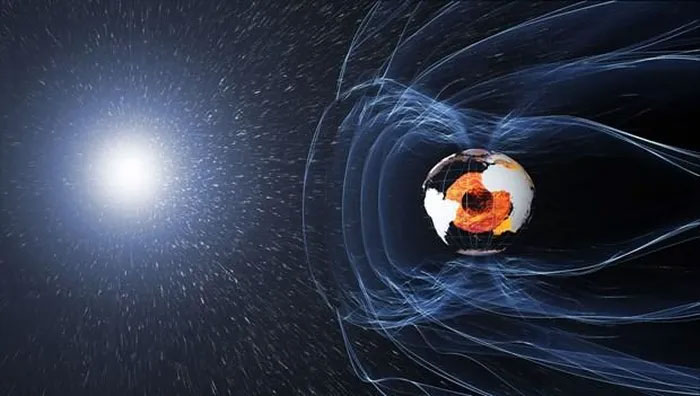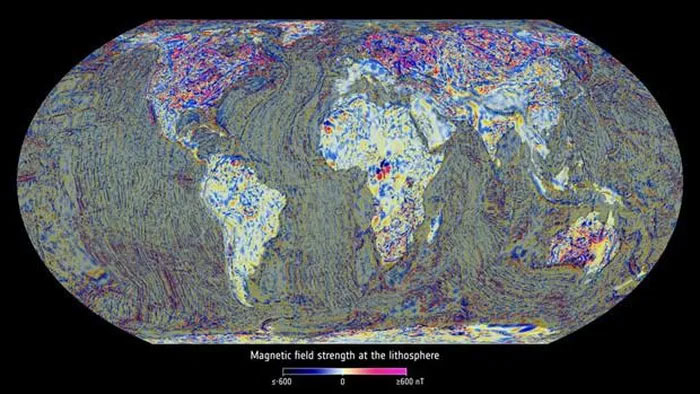Although playing an essential role in sustaining life on Earth, the magnetic field is not something we can truly see or hear.

The magnetic field protects us from cosmic rays and solar storms. (Source: ESA).
However, that was a story of the past. Scientists from the Technical University of Denmark have utilized magnetic signals measured by the European Space Agency’s (ESA) Swarm satellites and converted them into sound.
The result is quite a haunting sound.
The Earth’s magnetic field is a complex bubble, serving to protect humans from the onslaught of cosmic rays, as well as charged particles propelled by powerful solar winds.
When charged particles collide with atoms and molecules, primarily oxygen and nitrogen, in the upper atmosphere, some of the energy generated from these collisions transforms into green and blue light, characteristic of the aurora borealis.
Sometimes we can observe the aurora borealis in high-latitude areas of the Northern Hemisphere.
While the aurora provides a specific view of how charged particles interact with the Earth’s magnetic field, hearing sounds generated by this magnetic field as it interacts with the Earth or the solar wind is a completely different story.
The Earth’s magnetic field is generated by a “ocean” of superheated liquid iron, constantly swirling in the outer core of the Earth.
This area lies deep within the Earth, approximately 3,000 km from us. Functioning like a continuously spinning coil in a bicycle dynamo, this hot iron “ocean” continuously generates electric currents, which in turn create our ever-changing electromagnetic field.

Map showing the strength of the magnetic field on the Earth’s surface. (Source: ESA)
Launched in 2013, the trio of Swarm satellites from ESA is being used to understand how the magnetic field is generated by measuring magnetic signals originating from the Earth’s core, mantle, crust, and oceans, as well as from the ionosphere and magnetosphere.
Swarm has also led to deeper insights into space weather.
Musician Klaus Nielsen from the Technical University of Denmark, who supports the project, explains: “The team has collected data from ESA’s Swarm satellites, as well as various other sources. We then transformed these magnetic signals into sound. The project is certainly a valuable endeavor in bringing art and science closer together.”
The sound is quite eerie, filled with rumbling, crackling, and mysterious collisions. But just remember that this sound is generated from the activity of the Earth’s magnetic field, and we will find it very intriguing.

Image showing the strength of the magnetic field on the Earth’s lithosphere. (Source: ESA)
“We have access to a very interesting sound system, including over 30 speakers placed underground at Solbjerg Square in Copenhagen. We have set it up so that each speaker represents a different location on Earth, thereby illustrating how our magnetic field has fluctuated over the past 100,000 years,” musician Nielsen said.
According to this musician, throughout this week, the public will have the opportunity to hear the mysterious rumble of the magnetic field.
Therefore, if you are in Copenhagen, do not miss this unique experience.
The scientists behind the project also added that their goal is not to frighten people.
This is actually a way to remind us of the existence of the magnetic field, and although it may sound frightening, life on Earth depends on it.


















































